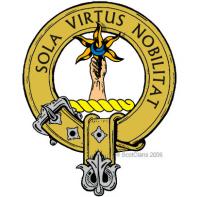
Clan Henderson
Henderson, Henry and Hendry are names so closely tied and so widespread it is not possible to determine one single line as being the first. Through its Gaelic translation into English, the name MacKendrick is revealed as another variation of Henderson. The Hendersons of Caithness and surrounding areas claim their descent from Henry, son of George Gunn, the chief of Clan Gunn and ‘Crowner’ of Scotland in the 1400s, who was deceived and slain by the Keiths.
Meanwhile, there were Hendersons in Dumfries-shire, the opposite end of Scotland.
In 1494, James Henderson became Lord Advocate and founded the line which flourished in Fordell, Fife. Born to this family in 1583 was Alexander Henderson, who drafted the National Covenant of 1638 with Johnston of Wariston. With this and his work towards the Solemn League and Covenant of 1643, and the Confession of Faith, he became the Presbyterian Church of Scotland’s most influential representative of those political years.
Claiming descent from ‘Big Henry’, son of King Neachtain, are the principle family of Hendersons, Clan Eanruig of Glencoe. King Neachtain reigned in the 700s and is said to have built Abernethy, the Pictish stronghold.
When the Hendersons came to Glencoe, the heiress of their last chief had given a son to Angus Og of Islay. Their grandson was Iain Abrach and his patronymic, MacLain, became the designation of the MacDonald of Glencoe chiefs.
In the years with the MacDonalds, it became tradition that the Hendersons, known for their size and strength, formed the personal bodyguard of the chief. Standing six feet and seven inches tall, the powerful Big Henderson of the Chanters was MacLain's piper and protector, and fell with the chief in the cold February night of 1692 in the Massacre of Glencoe, the treacherous outrage ordered by King William of Orange.
At the time of writing, the present chief is a Doctor of medicine, living in Australia.








